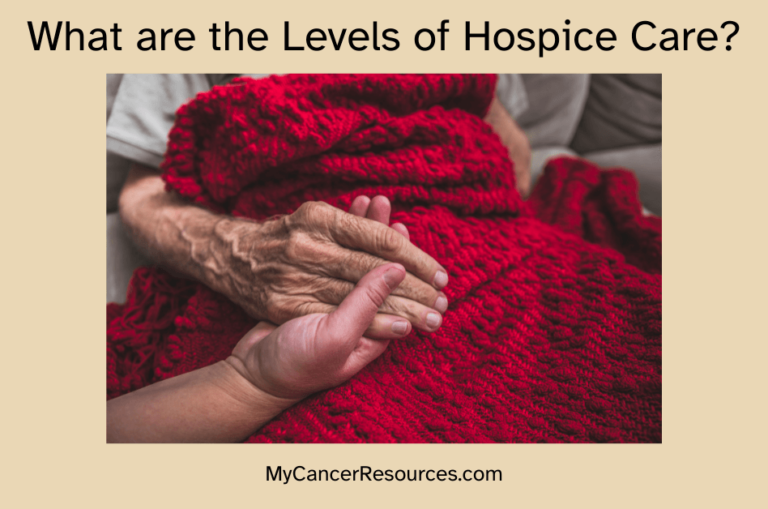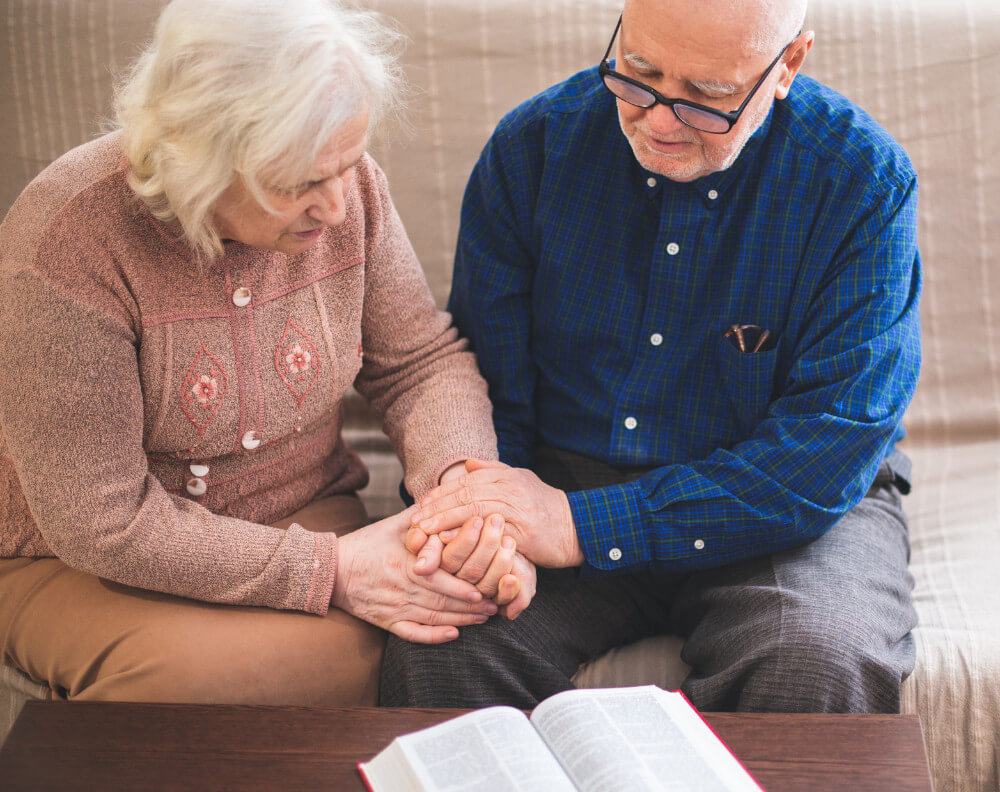
Hospice care is a type of compassionate care centered around providing comfort in a patient’s final days. Hospice care focuses on keeping patients comfortable after they have stopped curative treatment (treatment designed to cure a disease, like cancer).
If cancer doesn’t respond to treatments and if there are no other options to try, or if the side effects become too unbearable that someone decides they don’t want to continue with treatment, they are often referred to hospice to preserve their quality of life.
A main motto of hospice is ‘quality regardless of quantity’. This means that the focus is to make sure the individual is able to enjoy a good quality of life, even though the quantity of their days left are limited.
Hospice helps to control pain and provides tailored, supportive services to both the individual and their family members to help make their transition out of this life as peaceful as possible.
In other blog posts, I’ve talked about the differences between palliative care and hospice care and also the unique role of a hospice chaplain.
But, when talking to clients, I keep getting questions like, “What are the levels of hospice care that I keep hearing about?”
So today’s post will describe the four levels of hospice care, how they differ from each other, and what families can expect at each level.
The Four Levels of Hospice Care
Many hospice patients are insured through Medicare. In order for a hospice organization to be eligible to receive payment from Medicare for their services, Medicare has created standards that each partnering hospice organization must follow.
One of these standards is that a hospice agency must offer four levels of hospice care.
What are the four levels of hospice care? They are routine home care, continuous home care, general inpatient care, and respite care.
Each of these levels serves an important role in ensuring comfort, dignity, and quality of life:
- Routine home care is the foundation, offering daily assistance right at your doorstep. It’s what most envision when they think of hospice – a hospice nurse, social workers, and other hospice professionals coming to your home to provide care.
- When symptoms flare up or severe pain emerges, continuous home care steps in, offering around-the-clock support to manage these acute symptoms in your own home.
- For needs that escalate beyond home-based management, general inpatient care at a skilled nursing facility or hospice inpatient facility offers a more intensive level of support.
- Finally, respite care provides a short stay in a hospice facility to give family caregivers a much-needed break.
Routine Hospice Care at Home
Receiving care at home is the most common level of hospice care chosen by those with terminal cancer. This means a hospice team, including nurses, social workers, and spiritual support advisors, come to you.
They bring comfort, manage pain, and offer emotional support in your home, so that you can remain where you are most comfortable.
Home health aides can assist with personal care, ensuring that your needs are met. The hospice team trains caregivers on how to provide care, including how and when to give medicine, how to prevent bed sores, and how to empty catheter drainage bags, for example.
This is the type of hospice care we had for my mother-in-law in her final months with cancer. Different members of the hospice team came each week, and some daily as she neared death.
They provided supportive counseling to my husband and father in-law, as this was their first experience with a loved one’s cancer and with hospice care in general.
While she was still verbal, the hospice team made sure that my mother-in-law was able to express her thoughts and concerns about dying, and made sure she had plenty of opportunities to share with us her final wishes.
One of the things I loved most about our hospice team was that they always included Darlene in the conversations and made sure she was able to express what she wanted.
The nurses and aides taught us how to move her, how to clean and treat her bed sores, and ways to keep her comfortable when she was confined to bed for the last month or so of her life.
The incredible nurses and social worker helped to prepare the family for what to expect as her body began to shut down. They sat with us as we cried and held space for us in our anticipatory grief.
I am so thankful that we, because of our partnering with hospice, were able to honor Darlene’s final wishes of remaining at home until she died.
Continuous Home Care for Severe Symptoms
Sometimes pain or other symptoms can be so intense that they need more around-the-clock care. Continuous care at home is another one of the levels of care provided by hospice.
This is where a hospice nurse or other hospice professional can be at your side, right in your own home, day and night. They step in during the tough times when symptoms flare up and feel out of control.
It’s all about keeping you as comfortable and peaceful as possible, without having to move you out of your home.
General Inpatient Care for Intense Needs
If symptoms aren’t being relieved even with continuous home care, the next level of hospice care is general inpatient care.
This is when a patient can be moved to a skilled nursing facility or an inpatient hospice facility so that even closer monitoring can be provided and care can be tailored even further.
In this setting, a full hospice team including hospice nurses, hospice physicians, social workers, chaplains and nursing assistants provide around-the-clock care to ensure comfort and manage pain effectively.
Often, the goal is to stabilize whatever hasn’t been able to be controlled, so that the patient can return home if that is what they desire.
If someone decides to remain in an inpatient setting, they will continue to receive the high levels of care to ensure their transition is gentle and peaceful.
Respite Care for Family Caregivers
Inpatient respite care offers a break, a much-needed pause, for the caregiver.
Caregiving is physically, mentally and emotionally exhausting, and even the most dedicated and loving caregivers need a break.
Over the course of a few consecutive days, skilled nursing facilities or hospice inpatient facilities become a temporary haven for the patient.
All their needs will be met under the care of the hospice staff, and the caregiver can have a few days to themselves to relax, breathe, and focus on self-care so that they can regain the strength that’s so needed to support a loved one through their end-of-life journey.
Walking with Families Every Step of the Way
Hospice care teams offer their professional, compassionate care to both the terminally ill patient and their family members. They make sure everyone feels supported through this tough journey.
Care is tailored to meet the unique needs of the person facing the end of life, and is provided by a dedicated team whose focus is to ensure comfort and dignity.
The four levels of hospice care are routine hospice care, continuous home care, general inpatient care, and respite care.
Regardless of the level of care needed by your family, you can rest assured that the hospice care team will provide excellent end-of-life care.
They will focus on keeping you comfortable, keeping your quality of life as high as possible, and managing pain and other symptoms carefully.
The pain management and symptom management will be provided regardless of the setting or level of hospice care you need.
You won’t be alone on this journey, nor will your loved ones. Hospice will make sure both you and your loved ones are cared for during this difficult time.



